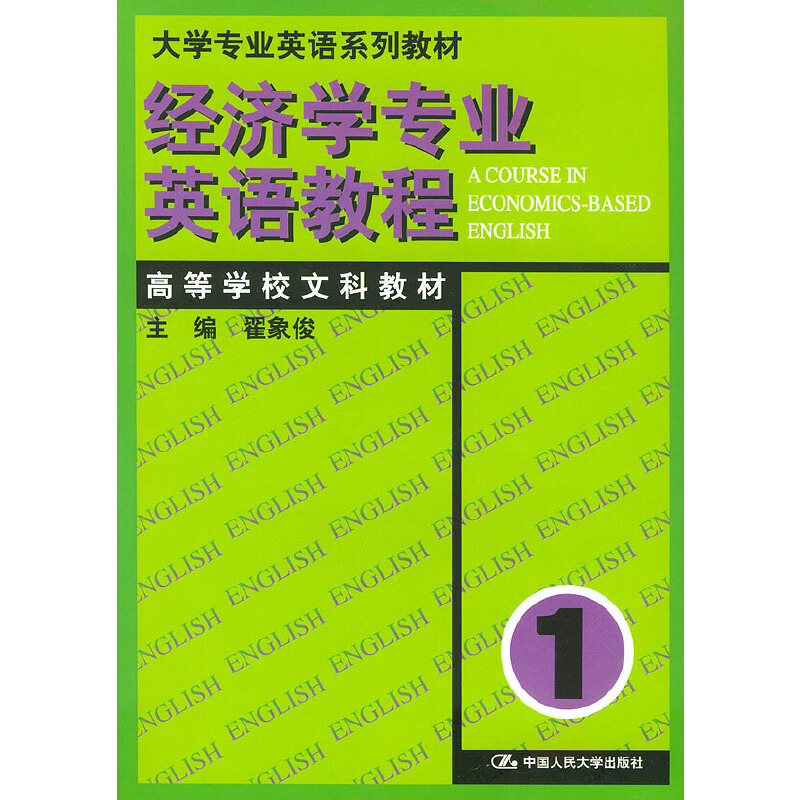英语写作基础 / 英语专业教材
¥45.00定价
作者: 朱继武,王西玲
出版时间:2005-10
出版社:西北工业大学出版社
- 西北工业大学出版社
- 9787561219225
- 65197
- 2005-10
- H315
内容简介
由朱继武、王西玲主编的《英语写作基础(英语专业教材)》是为英语专业本专科学生打好英语写作基础而编写的教材。全书共分为七大部分,即用词、句子、段落、文章、实用文、论文写作、文稿格式及标点符号。本书提供了大量例句、例段、范文及实用写作方面的用语,便于学生模仿和实践。
本书还可供非英语专业的研究生、广大英语爱好者以及大、中学校英语教师在练习、指导写作时使用,也可作为提高英语写作的自学教材。
本书还可供非英语专业的研究生、广大英语爱好者以及大、中学校英语教师在练习、指导写作时使用,也可作为提高英语写作的自学教材。
目录
Part One Diction
1.1 Appropriateness
Levels of Words
Style
General Guidelines
1.2 Exactness
Denotation and Connotation
Synonymous Words and Expressions
General and Specific Words
Abstract and Concrete Words
Idioms
Figures of Speech
1.3 Dictionaries
The Use of a Dictionary
Some Good Dictionaries
Part Two The Sentence
2.1 Elements of a Sentence
Subject and Predicate
Modifiers
Coordination and Subordination
2.2 Types of Sentences
Declarative, Interrogative, Imperative and Exclamatory Sentences
Simple, Compound, Complex and Compound-Complex Sentences
2.3 Effective Sentences
Unity
Coherence
Conciseness
Emphasis
Variety
2.4 Errors and Skills
Comma Splices and Fused Sentences
Sentence Fragments
Subject-Verb Agreement
Pronoun Reference
Shifts
Faulty Parallel Constructions
Mixed and Incomplete Constructions
Modifiers
Part Three The Paragraph
3.1 Introduction to the Paragraph
What Is a Paragraph
The Function of a Paragraph
Length of a Paragraph
Basic Elements of the Paragraph
3.2 Effective Paragraphs
Unity
Coherence
Completeness
3.3 Ways of Developing Paragraphs
Development by Description
Development by Process
Development by Comparison and Contrast
Development by Cause and Effect
Development by Classification
Development by Definition
3.4 Steps to Write a Good Paragraph
The Prewriting Stage
The Writing Stage
The Editing Stage
Part Four The Essay
4.1 The Writing Process
What Is Writing
What Is Writing Process
Five Steps in Writing
4.2 The Main Parts of an Essay
The Introduction
The Body
The Conclusion
The Outline
4.3 Types of Writing
Narration
Description
Exposition
Part Five Practical Writing
5.1 Writing Letters
Personal (or Private) Letters
Business Letter Writing
5.2 Writing a Resum e
The Use of a Resume
The Appearance of Your R6sume
Parts of a Resum6
Styles of a R6sume
How to Write a Perfect R6sum6
5.3 Everyday Writing
Writing Notes
Writing Notices
Writing and Sending an E-mail
Part Six The Research Paper
6.1 What Is a Research Paper
6.2 Choosing a Suitable Topic
6.3 How to Research and Collect Information
6.4 How to Analyze the Information and Organize Ideas
6.5 Working Out an Outline
6.6 Writing the First Draft
6.7 Revising the Draft and Finalizing the Paper
6.8 Proofreading
6.9 The Format of a Research Paper
Part Seven Punctuation and Mechanics
7.1 Punctuation
The Period
The Comma
The Semicolon
The Colon
The Question Mark
The Exclamation Point
Quotation Marks
The Apostrophe
7.2 Mechanics
Italics
Syllabification
Capitalization
Abbreviations
Numbers
Key to the Exercises
Appendixes
I. Words and Phrases Frequently Used in Letters of Application
II. Words and Phrases Frequently Used in Letters of Recommendation
III. Words and Phrases Frequently Used in Resume Writing
Glossary
Bibliography
1.1 Appropriateness
Levels of Words
Style
General Guidelines
1.2 Exactness
Denotation and Connotation
Synonymous Words and Expressions
General and Specific Words
Abstract and Concrete Words
Idioms
Figures of Speech
1.3 Dictionaries
The Use of a Dictionary
Some Good Dictionaries
Part Two The Sentence
2.1 Elements of a Sentence
Subject and Predicate
Modifiers
Coordination and Subordination
2.2 Types of Sentences
Declarative, Interrogative, Imperative and Exclamatory Sentences
Simple, Compound, Complex and Compound-Complex Sentences
2.3 Effective Sentences
Unity
Coherence
Conciseness
Emphasis
Variety
2.4 Errors and Skills
Comma Splices and Fused Sentences
Sentence Fragments
Subject-Verb Agreement
Pronoun Reference
Shifts
Faulty Parallel Constructions
Mixed and Incomplete Constructions
Modifiers
Part Three The Paragraph
3.1 Introduction to the Paragraph
What Is a Paragraph
The Function of a Paragraph
Length of a Paragraph
Basic Elements of the Paragraph
3.2 Effective Paragraphs
Unity
Coherence
Completeness
3.3 Ways of Developing Paragraphs
Development by Description
Development by Process
Development by Comparison and Contrast
Development by Cause and Effect
Development by Classification
Development by Definition
3.4 Steps to Write a Good Paragraph
The Prewriting Stage
The Writing Stage
The Editing Stage
Part Four The Essay
4.1 The Writing Process
What Is Writing
What Is Writing Process
Five Steps in Writing
4.2 The Main Parts of an Essay
The Introduction
The Body
The Conclusion
The Outline
4.3 Types of Writing
Narration
Description
Exposition
Part Five Practical Writing
5.1 Writing Letters
Personal (or Private) Letters
Business Letter Writing
5.2 Writing a Resum e
The Use of a Resume
The Appearance of Your R6sume
Parts of a Resum6
Styles of a R6sume
How to Write a Perfect R6sum6
5.3 Everyday Writing
Writing Notes
Writing Notices
Writing and Sending an E-mail
Part Six The Research Paper
6.1 What Is a Research Paper
6.2 Choosing a Suitable Topic
6.3 How to Research and Collect Information
6.4 How to Analyze the Information and Organize Ideas
6.5 Working Out an Outline
6.6 Writing the First Draft
6.7 Revising the Draft and Finalizing the Paper
6.8 Proofreading
6.9 The Format of a Research Paper
Part Seven Punctuation and Mechanics
7.1 Punctuation
The Period
The Comma
The Semicolon
The Colon
The Question Mark
The Exclamation Point
Quotation Marks
The Apostrophe
7.2 Mechanics
Italics
Syllabification
Capitalization
Abbreviations
Numbers
Key to the Exercises
Appendixes
I. Words and Phrases Frequently Used in Letters of Application
II. Words and Phrases Frequently Used in Letters of Recommendation
III. Words and Phrases Frequently Used in Resume Writing
Glossary
Bibliography





